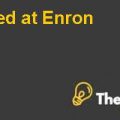
Strategic Issues
The basic strategic issue or strategic challenge facing the management of Russell Reynolds Associates is to identify, which world markets would be the most suitable options for the management of the firm to charter its expansion strategy and how quick the management of the company needs to make the decision to open company offices in those countries. The timing of opening new offices in those countries is one of the critical components of the expansion strategy of the management of the company.
This is because most of the direct competitors of the company such as the Heidrick and Struggles and Korn/Ferry had already established their operations in most of the major countries and recently, they have also undergone an initial public offering in order to raise the needed capital to support their expansion strategies for globalization of their operations. These firms were also capitalizing on their key strengths to acquire other executive search firms and opening new offices to create a competitive position in the market.
Apart from the timing issues, the management of the company will also have to gain the approval of all the active members of the company so that a significant investment to open new offices in new parts of the world could be funded easily. Along with this, there were numbers of factors that need to be considered by the management of the company before opening any new offices in any new parts of the world. The first requirement was that there should be the presence of the existing multinational clients in those countries. Furthermore, the country’s economic stability should be strong with sold industrial base and future growth prospects. The company would also have to focus on a particular sector before penetrating any country for opening new offices. However, currently this factor was of less importance because of the broadening of the practice areas. Based on these range of factors, the management and the CEO of Russell Reynolds Associates will have to identify the possible alternatives and then choose the one, which best meets the firms expansion strategy requirements.
Analysis
First of all, in order to identify the dynamics of the executive search industry, it needs to be analyzed in depth. Therefore, an in-depth understanding of the industry structure and the competitiveness of the industry needs to be analyzed and in order to do that the Porter’s five forces model has been applied to the executive search industry. Furthermore, in order to analyze the strength of the internal capabilities of the company to deal with all the issues, the strengths and weaknesses part of the SWOT model has been analyzed. First, we begin the analysis with a deep examination of the executive search industry.
Porters Five Forces Framework
The Porter’s five forces model is designed around five components that determine the competitiveness of the industry (Porter, 2008).
Bargaining Power of Suppliers
If we talk about the first factor of the Porter’s five forces model, then it is evident that there are 4 key competitors, which are operating in this power and each of these four executive search firms have their own expertise in the market. Apart from these key competitors in the market, there were also other smaller firms, which also provided the impetus for the executive services supply in the market. The success of all of these firms was dependent upon the ability to retain and attract the executive consultants and this was quite difficult to maintain because the market for these search consultants was fluid and the consultants usually switched from one competitor to the other competitor. This weakened the bargaining power of these executive search companies because most of the clients of these companies followed these consultants. As a result of this, the clients also switched easily from one competitor to another competitor. Therefore, it could be concluded that the bargaining power of the executive search firms is weak in this industry.
Bargaining Power of Buyers
Secondly, if we talk about the bargaining power of the buyers who are basically the clients of these executive search firms, it could be seen that the clients value the knowledge and the searching expertise of the search consultants in this industry and hence, they switch search firms easily without any difficulties. In the previous years, the off-limit criteria helped the search companies to establish long term relationships with their clients however, recently these off-limit criteria have narrowed as a result of the increased demand for the most talented executives (Coyne, 1996). Therefore, the overall bargaining power of the clients in this industry is moderate to high.........................
This is just a sample partial case solution. Please place the order on the website to order your own originally done case solution.












